In a circuit like this, can the crystal oscillator be replaced with a DDS such as a AD9850? If so can it just be dropped in or would other components have to be changed?
Second question, how sensitive are simple transceivers like this to slight changes in capacitance, for example, a 110pf capacitor instead of the 120pf one below the crystal?
Final question, if I want to change the DDS frequency(to 14Mhz for example) do all the capacitors, etc need to be changed?
Thanks so much for your time.